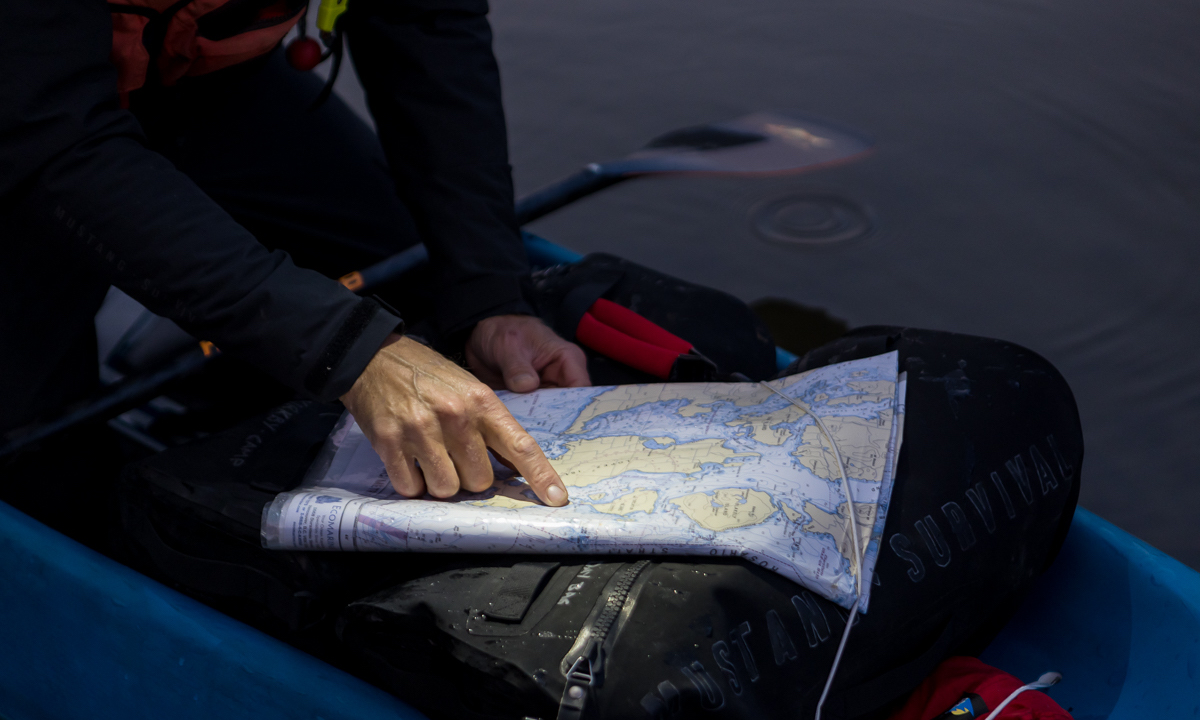How To Go On A SUP Expedition
- Written by Staff
- Published in Tips
- Comments::DISQUS_COMMENTS
SAN DIEGO, CA—We recently connected with Bruce Kirkby to get the inside scoop on Starboard's Sprint Expedition. Today, we're back with some pro tips on how to go on a SUP expedition. Our big question: "Board aside, what other accessories should one have to go on a SUP expedition?" Check out Bruce's insight below.
Packing
I suggest packing for a SUP expedition with the same mindset that you might prepare for backpacking journey—except this time it’s on water! You want to choose lightweight and space-efficient gear. But don’t go crazy trying to shave off every last gram. For example, it’s not worth cutting your toothbrush in half! The SUP can carry heavier gear far more efficiently than your backpack, and it’s better to be comfortable and safe out there. If in doubt, bring it along—at least on the first trip.
 Photo via Starboard
Photo via Starboard
Everything must be carried in dry bags, or it will get soaked. Some people pack everything into a single, massive 115 litre bag, while others try to lash down a mess of 10 litre bags! I think the sweet spot lies somewhere in the middle, and my system has evolved to carry everything in three 35l bags. (I personally use the Mustang Survival Greenwater 35 deckbag, because they sit low--improving stability--and the zipper makes it easy to access everything inside.)
In my “Camp bag”, I pack a lightweight tent, a sleeping pad and bag, an inflatable pillow, warm clothes for shore, and a pair of running shoes. I also pack a book and headlamp.
 |
 |
Photos via Starboard
In my “Food bag” is a mountaineering stove, fuel bottle, titanium pot, bowl, mug and spoon. I generally eat oatmeal and instant coffee for breakfast, and a free-dried meal at night. During the day I snack on nuts, cheese, pepperoni and energy bags.
In my “Day bag” I carry all the clothing and gear I could possibly need from the coldest and windiest conditions, to the very hottest, sunniest days. I have rain layers, polypro layers, a warm hat, sun hat, sun shirt, etc. I also have sunscreen, snacks, hydration tablets, camera, and anything else I might need while on the water.
Safety
Safety gear is the most critical, and everyone should carry a leash, PFD, and charts/tide tables. A comprehensive First Aid kit is essential. Additionally, in a waterproof fanny pack, I always carry emergency supplies, just in case I become separated from my board, including a VHF marine radio (to contact ships and receive weather forecasts), a GPS/emergency beacon, a knife and firestarter kit.
 Photo via Starboard
Photo via Starboard
On long expeditions, I like to use a 2-piece paddle, allowing me to alter my position as wind or fatigue increases. But a 3-piece or solid shaft paddle will do. Additionally, I carry a spare 3-piece paddle lashed to the tail of my board, alongside a tow/throw line. During the day I wear a base of Vaikobi tights and sun shirt, along with sturdy water shoes (I like the Astral Designs Hiyak.) I’ll add jackets and waterproof pants as needed.
 Photo via Starboard
Photo via Starboard
A very important safety strategy to follow is to always wear your day clothes during the day, and your dry ‘night clothes’ once on shore. It can be very tempting to leave shore wearing the warm snuggly long johns you slept the night before. But they will inevitably soon be soaked. Far better to grit your teeth and pull on the cold clammy clothes from yesterday. Otherwise you’ll soon find every piece of clothing you brought along on the trip is wet.
About Bruce Kirkby
With decades of expeditions spanning the globe – from Africa to Arabia, from Mount Everest to the high Arctic – Canadian adventurer Bruce Kirkby brings a wealth of wilderness experience to the Starboard Dream Team.
Growing up in Toronto and graduating in Engineering Physics may seem like an unlikely start for a world adventurer, but by the age of 20, Bruce had already chosen the road less travelled. Guiding rafts in the Yukon and sea kayaks in the Caribbean led to more challenging expeditions. Bruce has crossed Iceland by foot, descended Ethiopia’s Blue Nile by raft, traversed Borneo’s north coast by sea kayak, and crossed the Empty Quarter by camel. Along the way he established himself as a world-class photographer and writer (National Geographic, NYT, Outside) with three best-selling books.
Ten years ago, on a whim, Bruce ordered an inflatable SUP, which arrived on his doorstep in carboard box. Less than a month later he paddled from Vancouver to Victoria – a five-day, 155km journey that changed his life. And he’s never looked back. Today, Bruce continues to relentlessly push the limits of what is considered possible on a paddleboard. His journeys include traversing the outer coast of Vancouver Island, following an ancient coastal Grease Trails thought British Columbia’s Great Bear Rainforest, and rounding the capricious headlands of Cape Scott, Brooks Peninsula, and Cape Caution.
Thank you Bruce for your expert insight!
For more SUP news, click HERE.

Staff
Submit your news, events, and all SUP info, so we can keep promoting and driving the great lifestyle of stand up paddling, building its community, and introducing people to healthier living.
Website: supconnect.com Email This email address is being protected from spambots. You need JavaScript enabled to view it.





